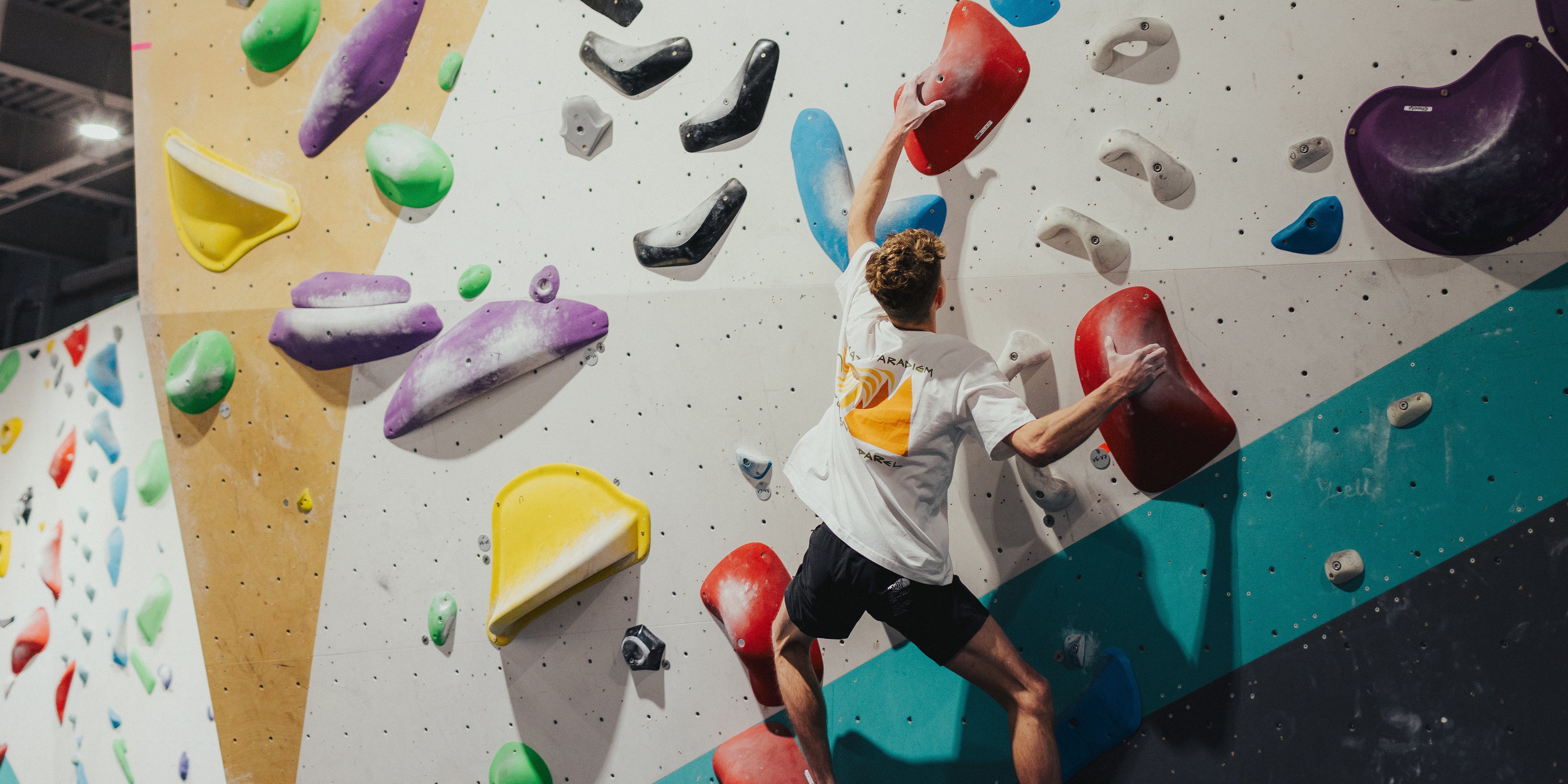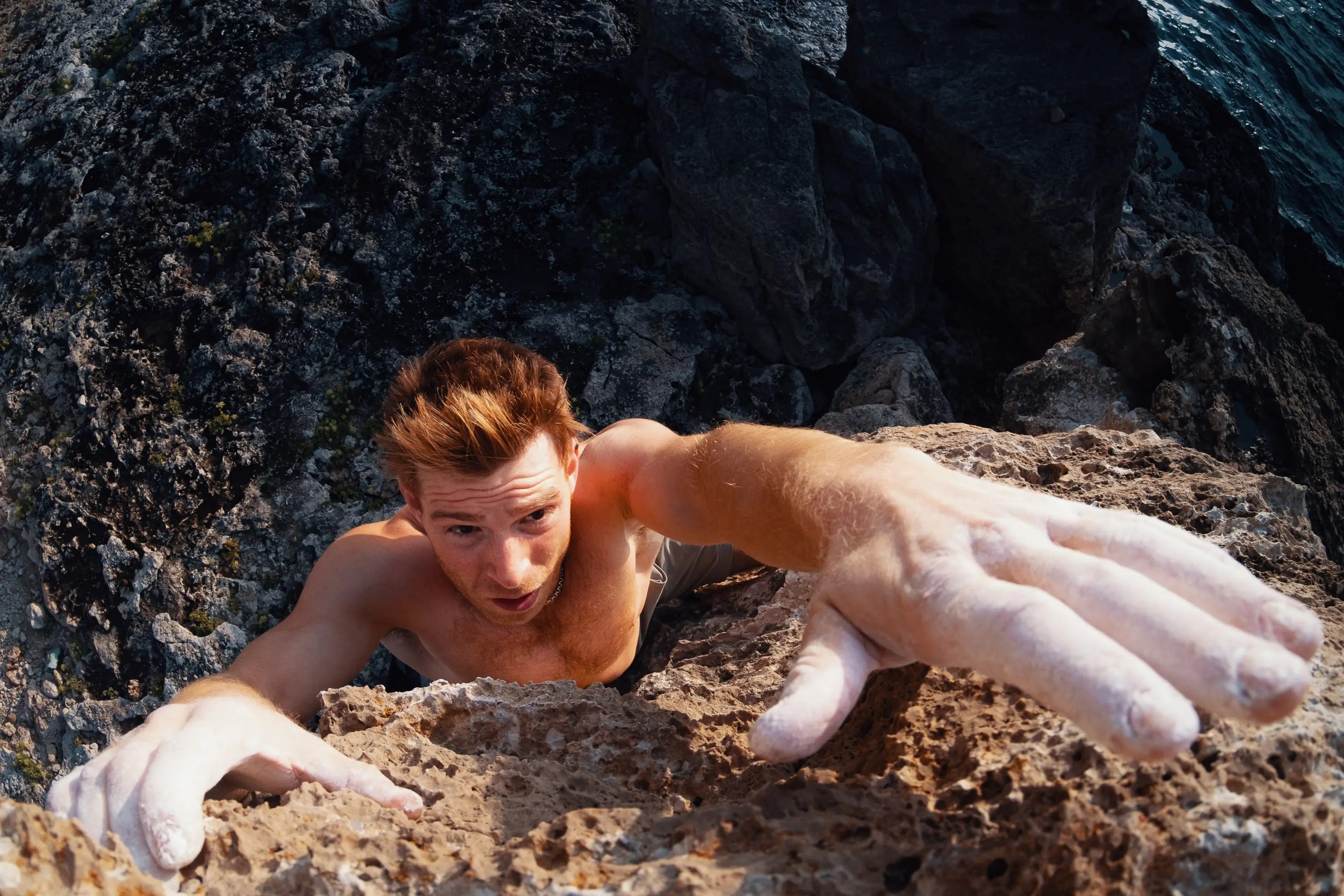Written by Hannah Morris
In nearly every major town and city, we’re spoiled for choice by a growing selection of bouldering and climbing facilities. But, take a closer look at the rapid development of our climbing spaces, and you find a fascinating story. A tension between climbing as it was, and climbing as it is now, that divides climbing opinion.
I spent several days inside the country’s oldest dedicated bouldering centre, finding out how these original climbing spaces came to be. And then, I stepped inside the nation’s newest dedicated bouldering centre, to understand why and how our indoor walls are changing.
The UK has over 450 climbing walls. In London alone, there are 38. But, before there were so many, there was just one. The first of its kind.
The Roots of Mile End Climbing Wall

From the outside, Mile End Climbing Wall is unassuming. It is an industrial canal-side unit which has been passed down through the trades, from a pipe-bending factory, to a kayak centre, before in 1986, a transition to a dedicated bouldering centre.
Mile End Climbing Wall is a sprawling gym, bearing all the hallmarks of climbing’s roots as a fairly niche sport. To walk through the centre, past the breezeblock training room into the bonkers Monkey House, is to be transported to a time when climbing looked very different.

I was passing through a collection of spaces that felt hand-stitched together. The climbing wall had grown into its surroundings, like a forgotten building now alive with wildlife.
I started my visit by talking to Dean Straw, who heads up Mile End Climbing Wall - or more specifically the charity behind it.
“It’s really old,” Dean started.

He pointed to the jagged wall angles behind him in the Monkey Room, which are one of the original features of Mile End Climbing Wall, left untouched.
“This room is made of such thick plywood. It’s really robust. It’s stood the test of time.”
Decades before, Dean explained, this room had been a swimming pool where groups of outdoor enthusiasts would practice canoe kayak rolling.
“There are rumors of really good pool parties in here but that was before my time I'm afraid” added Dean, with a knowing smile.
In the 1980s, a charity called North London Rescue Commando had taken over the manufacturing premises. They used to take young people on to the canal, and slowly over time, had widened their scope to appeal to more outdoor enthusiasts by developing a small climbing wall.
As climbing grew in popularity over the years, the climbing part of the facility “grew and grew” explained Dean. Before eventually, it became known as the Mile End Climbing Wall.
A Growing Demand
The rich history of the building is told in many different ways. The layout is unorthodox. It’s charming but sometimes cramped. The wall angles are varied, and there are several top-out boulders, which feels in keeping with the centre’s outdoor heritage.
The walls were added slowly over time as climbing sessions became more sought after, and in the older spaces, you can see where the height of the walls extends far beyond where the modern bouldering routes are set to finish.

Before new regulations, it was normal to climb this high - and that would’ve been without any of the crash matting in use today, a few of the older local clientele told me with a sense of pride.
Walking from room to room you get a sense of where the past now blends with the present. Change has been embraced with competition routes set on fibreglass holds. A set of weight lifting racks obscure the concrete breezeblock wall behind that was used to practice traditional climbing gear placement.

As someone who has been a devout climber for the best part of a decade, these changes seem to match the shift in climbing wall audiences over the years. It’s become more rare to meet climbers dedicated to outdoor pursuits alone, and more common to bump into recreational climbers and those taking something different from the sport, whether it be a place to socialise, a set of physical puzzles to solve, or a mindful haven.
I felt to some extent that Dean must feel the challenge of trying to meet differing expectations of seasoned veterans, as well as those taking their first steps into the sport.
But, on his side, was an abundance of character and community, fostered over decades of organic growth.
The UK’s Newest Climbing Wall
Over 300 miles north of Mile End climbing wall, also situated in the type of industrial park that British climbers will be familiar with, is the brand new The Climbing Hangar Edinburgh.
It's the ninth offering from the largest chain of bouldering gyms in England. So 40 years on, how have bouldering walls changed.
The Climbing Hangar has come about as close as you can to bottling up a climbing experience that's approachable, rewarding and social. The space is colourful and well lit with eye-catching climbing routes and a fully equipped training area, stylish walkthroughs, and a cafe that's worth a visit alone.
It's a destination that might host a hardcore bouldering session on the hard circuit, a social coffee and a climb, or even a remote worker with an active lunch break.
The Climbing Hangar’s Evolution
The vision behind The Climbing Hangar started in 2011, when founder Ged, a passionate climber, opened the first location in Liverpool.

What began as a passion project to create a space for climbers grew into a major business. Today, the company boasts over 10,000 monthly members, all looking for an innovative, approachable climbing experience.
Ged noted how much the sport—and climbing walls—have changed since the early days.
"I think the very first thing that you'd notice as just anybody off the street is this looks like a sports facility. Like, the reception desk, it's clean, there's air conditioning, there's signage, there's fire escapes. It's a compliant space that looks like it is used for sports," says Ged.
"From an industry perspective, the key thing I note is there’s probably £25,000 worth of holds on the walls for a single boulder. In the first The Climbing Hangar, we spent £99,000 for the entire center,” Ged points out.

Scaling, Innovation and Accessibility
I asked Ged to walk us through a few routes around the center to get a sense of how modern routes were planned.
"At the beginning people just need to get to the top to understand if they are comfortable off the ground," said Ged.
"What we're trying to do is make sure more than anything else that the first 50% of our circuits are much easier and the differences between them are lower. Once you're climbing harder, you know that falling off is part of the fun."
This mindset - a clear focus on accessibility - was undoubtedly one of the most significant shifts in modern climbing facilities.
Today, climbers often walk off the street with little experience and a group of friends. The bouldering gym is responsible for welcoming them in, in some ways replacing the role of outdoor climbing’s past generation of mentors.
"At the beginning, the people that went climbing were all from an identical tribe. Climbing was made by climbers, for climbers. If it was cold, draft, or leaking, you didn't mind. Now, people are not coming in with that same singular climbing focus.”

Ged was succinctly tapping into what I think is probably the greatest shift in how climbing and by effect our climbing spaces have changed. For a long time, squeezing into painful climbing shoes, or shivering in a dusty basement was seen almost as a right of passage by climbing purists - those first pioneers of our sport.
But now, perhaps climbing is a more democratic space. It's harder for anyone to dictate those rules. Many different groups of people have started to take their own meaning from climbing.
There are now new voices who are using climbing in a different way. They want to take it to different places.
“I think evolution is cultural,” says Ged, “And then the facilities have started to reflect that."
A Climbing Future For All
There’s no doubt the trajectory of climbing over the last decade has been remarkable.
When I started climbing 10 years ago, I had a choice between two local walls and now that's a choice between five. I would watch YouTube and be fortunate to find a climbing film focused on women.
The Climbing Hangar, or any new wall, clearly faces a challenge to position themselves carefully – finding the line between tradition and accessibility.
On the other hand, Mile End Climbing Wall, with history written on its walls, must tread a new path, without erasing the sports foundations.
These different spaces both sit above the same shifting tectonic plates, listening and responding as the culture of our sport changes.






Share:
Behind The Team